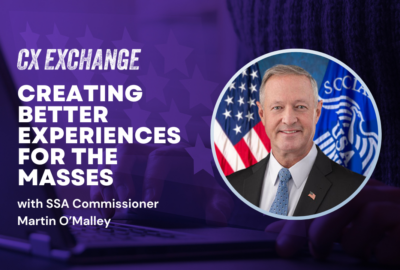CX Exchange 2024: DoD’s Tashona Beale on Washington Headquarters Services’ first-ever CX management plan
WHS’ customer experience strategist shares details about how the organization intends to improve experiences and services delivery for its customers.
The Defense Department’s Washington Headquarters Services officially formed its first-ever customer experience office in 2019 to enhance the delivery of IT services for DoD personnel. Last year, the office focused on establishing priorities and objectives for how WHS is moving forward with its customer experience initiatives.
This year, the office’s staff of four is working on its first-ever CX management plan for fiscal 2024 to 2027.
“In this plan, we identify, communicate and organize how we are going to implement the CX strategy across the organization,” Tashona Beale, customer experience strategist for Washington Headquarters Services, said on Federal News Network’s CX Exchange 2024.
Improving customer experience has been a growing priority for DoD since 2019. In 2023, the Defense Business Board found that 80% of Defense personnel rated their user experience as average or below average.
WHS, which provides support services to the DoD Fourth Estate organizations and offices across DoD headquarters, is particularly keen to making sure it meets both needs and expectations of the many diverse customers it supports, Beale said. It’s also thinking about CX internally, from the perspective of its own employees.
The WHS CX Office’s strategy has four objectives:
- Establish and implement customer service standards
- Develop baseline customer service satisfaction scores
- Provide customer service and CX training
- Create a CX recognition program for employees
The office is currently rolling out four training courses. A course that covers foundational knowledge about WHS and its directorates and offices is already available to the organization’s employees.
The second training course focuses on customer service standards in action. “This training includes real-world scenarios of how to apply our standards. It lets the employee know how to use what we’ve given them,” Beale said.
The third training, which focuses on how managers and supervisors can utilize CX principles to contribute to the WHS’ mission, will be available later this year. The fourth training course will give WHS employees the tools to apply CX principles to their roles, which will let them grow professionally and improve their day-to-day interactions with customers, Beale. The course will be available to WHS employees in 2025.
Establishing customer experience baselines for WHS
Last year, the office surveyed its customers across the Defense Department’s organizations to establish a baseline of user experience satisfaction levels. Broadly, the survey covered WHS’ delivery of IT services and how it interacts with its customers. Based on the survey results and discussions with the leadership, the office set 12-month goals for improving CX.
“With the results, we understood where we scored in certain areas. The areas were consistent with our customer service standards and our key performance indicators,” Beale said. “We have 10 customer service standards, but only seven were measurable. So that’s what we utilized to create the baseline.”
While there were positive findings — “our employees are highly ranked as professional and courteous to our customers,” there were also areas where WHS could focus on making improvements, she said. “What we found is we can improve on our timeliness of services. Because we do have a vast number of services that we provide, timeliness was one that we can improve on.”
Applying human-centered design principles at WHS
Beale said her office approaches human-centered design through training to ensure everyone within the organization understands what it is and how it can be incorporated into their daily work with customers.
To better understand and address its customers’ needs and preferences, the office regularly conducts focus groups, which inform future surveys on how to integrate human-centered design into the organization’s daily operations.
“Before we put any information out or conduct a survey, we actually do focus groups with our customers to make sure they understand the purpose of the surveys. What we’re trying to understand about them, and we utilize that information to craft or develop our surveys,” Beale said.
“We use the data received from the surveys, quantitative as well as qualitative data, and take that to make data-driven decisions. For instance, understanding what our customers’ pain points are. Those would be the areas that we concentrate on first when looking at updating processes or establishing new ways of doing business.”
Additionally, the office is working on incorporating tools such as automation and cloud, among others, to improve experiences across the organization.
Beale said her office is partnering with other DoD components to identify new initiatives and best practices mainly related to application programming interfaces, which will allow different software applications to communicate and exchange information with one another.
“We’re also looking at building and developing CX-centered partnerships across the DOD. One example is with the [DoD Chief Digital and Artificial Intelligence Office], but another example is reaching out to other CX offices or components throughout the DOD,” said Beale.
Discover more customer experience tactics and takeaways from Federal News Network’s CX Exchange 2024 now.
Copyright © 2025 Federal News Network. All rights reserved. This website is not intended for users located within the European Economic Area.






